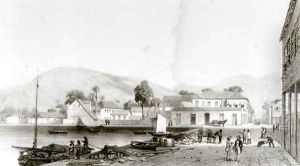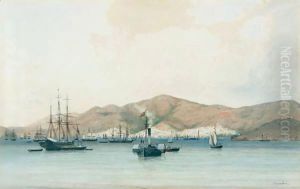Jean-Michel Cazabon Paintings
Michel-Jean Cazabon, often referred to as Jean-Michel Cazabon, was the most celebrated painter from Trinidad of the 19th century. Born on September 20, 1813, in San Fernando, Trinidad, he was the son of a well-to-do family of free colored people, a social class that emerged in the Caribbean during the colonial period. Cazabon's parents sent him to England to be educated, which was common practice among affluent families in Trinidad at the time.
In England, Cazabon's artistic talents were nurtured. He attended the prestigious Royal College of Art in London. However, the exact details of his studies are not well-documented. After completing his education, he returned to Trinidad around the 1840s, where he began his career as a professional artist. Cazabon's work primarily focused on the landscapes and daily life of Trinidad, capturing the island's unique tropical beauty and the diverse cultures of its inhabitants.
Cazabon's paintings and watercolors are characterized by their detailed portrayal of Trinidad's colonial society and natural environment. His works were a blend of romanticism and realism, and they give a valuable visual account of 19th-century Trinidad. He was particularly adept at using light and shade to create atmospheric effects in his landscapes.
During his career, Cazabon received patronage from various members of the colonial elite, including the then governor of Trinidad, Lord Harris, who commissioned a series of watercolors depicting Trinidadian estates and scenes. These commissions helped to establish Cazabon's reputation as the preeminent artist of his time in Trinidad.
Despite his success, Cazabon's life was not without challenges. He faced racial discrimination in the colonial society of Trinidad, which affected his ability to secure commissions and his interactions with the elite clientele. Financial difficulties also plagued him later in life, and he spent some time in Martinique and France, seeking new opportunities.
Jean-Michel Cazabon died on November 20, 1888, in Trinidad. Today, his work is highly regarded for its historical value and artistic merit. His paintings are considered national treasures in Trinidad and Tobago and are an important part of the country's cultural heritage. Cazabon is celebrated as a pioneer in Caribbean art, and his legacy has inspired subsequent generations of artists in the region.

